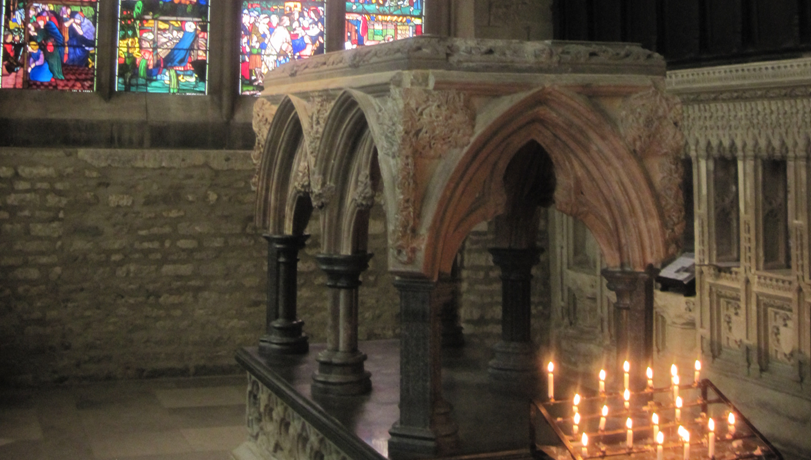Statue of St. Aidan on Holy Island
The southern part of the kingdom of Northumbria in what is now northern England had been converted by 627 when Paulinus established a bishopric at York, but by 632 the Mercians had taken over and restored paganism under King Penda. When King Oswald of Northumbria came out of exile later on he decided to bring back a mission to his kingdom. So, as Oswald had spent his exile with the Celtic Christians of Iona, St. Aidan, a monk of Iona was sent to spread the gospel to the Northumbrians. He was consecrated bishop and established an Abbey-church at Lindisfarne or Holy Island to serve as the seat of his episcopal see. He spent much time evangelizing on foot to all people he came across and was revered as wise and holy. The Venerable Bede wrote "He neither sought nor lovedanything of this world, but delighted in distributing immediately to the poor whatever was given to him by kings or rich men of the world". In 651 Aidan died at Bamburgh, two miles south of Holy Island, and is credited for converting the peoples of Northumbria and even down into Mercia. His relics were taken with Cuthbert's and Oswald's* to Chester-Le-Street and then to Durham, where they now rest in St. Cuthbert's tomb. The establishment of Durham Cathedral is descended from Aidan's foundation at Lindisfarne.


No comments:
Post a Comment